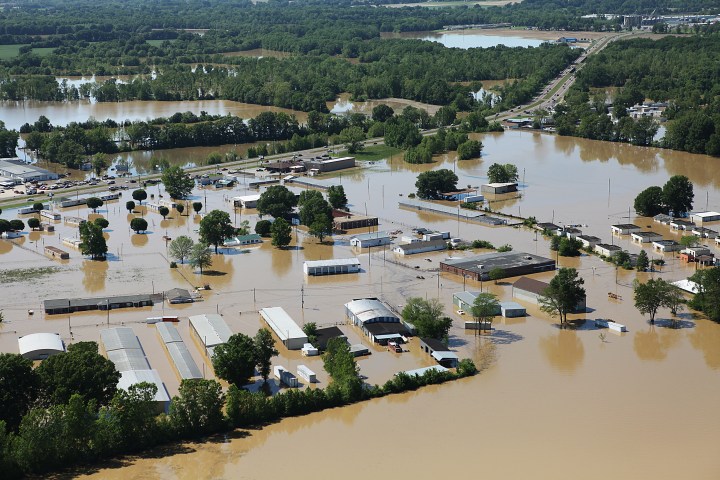

Fortunately, there are plenty of things you can do in advance to help protect your family, home, and property from destructive flooding. Before you decide to build an ark, here are 10 ways you can prepare for a flood.
Get a weather radio and learn to understand emergency notifications
One of the first things you can do is buy a weather radio that can broadcast weather bulletins from the National Oceanic and Atmospheric Administration (NOAA). NOAA Weather Radio All Hazards (NWR) is a cross-country network of radio stations broadcasting continual weather information directly from the closest National Weather Service Office. These stations broadcast a variety of emergency notifications including flood watches and warnings, flash flood watches and warnings, and evacuation notices.
Research Your flood risk
Learn in advance whether your area is susceptible to flooding. The Federal Emergency Management Agency (FEMA) maintains online flood maps to show the locations and risk levels in specific geographic areas. You can also contact your county planning division to get an assessment of your flood risk.
Prepare emergency supply kits for your home, work, and car
Ready.gov is an excellent governmental resource for information on how to prepare for inclement weather and other disasters. Here’s a great checklist of what to pack in your emergency kits, which should be standardized for your home, workplace, and car so they can be easily accessed in the event of an emergency.
Establish your evacuation route
Knowing your way in and out of your immediate geographic vicinity and how to navigate your community when it’s flooded could save your life. You will need to keep to higher ground if you do evacuate. All family members should know where they are supposed to meet, and that information should be written down. Go over these plans with your family to ensure that everyone knows what they should do.

Have a plan for communicating with family members
During an emergency, sending texts or instant messages can be faster than a phone call. All family members also need to have a family contact that is out of the immediate geographic area, in the event information needs to be passed through a third party.
Raise up appliances, other items to protect them from damage
Flooding can cause substantial damage not only to your home but also to your property, including sensitive appliances. Raising up major appliances and electrical outlets can help keep them from being flooded. You can always get inspiration from these flood-proof homes.
Save your important documents
Copy, save, or upload to the cloud important papers and documents including insurance policies, photographs of your stuff and your home, and any other important records like leases or birth certificates.
Protect your drains from increasing the damage
A house’s water and sewage systems are particularly prone to flood damage, making a big mess even harder to clean up. Installing a sump pump, which dispels water from basements and other low-lying areas, can help with this risk. You can also use backflow valves in toilets, drains, and sinks to prevent floodwaters from backing up.
Stockpile emergency supplies
In addition to having your emergency kit handy so you can get to it quickly if you have to evacuate, you can take other steps to help prepare for flooding. Storing valuables, medication, and chemicals (separately) in a higher place is a good first step. If your risk for flooding is particularly high, you might consider stockpiling emergency materials that might be needed, such as plywood, plastic sheets, nails, a hammer and saw, a crowbar, shovels, and sandbags before the flood arrives. Or, like this guy, you can build your own dam.

Manage your financial risk
The best way to manage your financial risk and protect your home is to buy flood insurance. Flood insurance is available across the country for homeowners, renters, and business owners. Homeowner’s insurance doesn’t typically cover flood damage, so this insurance has to be purchased separately and any claims filed separately from homeowner’s insurance. Visit Floodsmart.gov to get an estimate of the pricing for flood insurance for your geographic location/address.
With these tips in mind, you should be much better prepared in case flooding becomes a dangerous situation in your neighborhood. If you have been evacuated, do not return until authorities broadcast that it is safe. You’ll also want to let friends and family know that you are safe. Checking in on social media or using the Safe And Well website sponsored by the American Red Cross can be a quick and useful way to broadcast that you are out of harm’s way.


